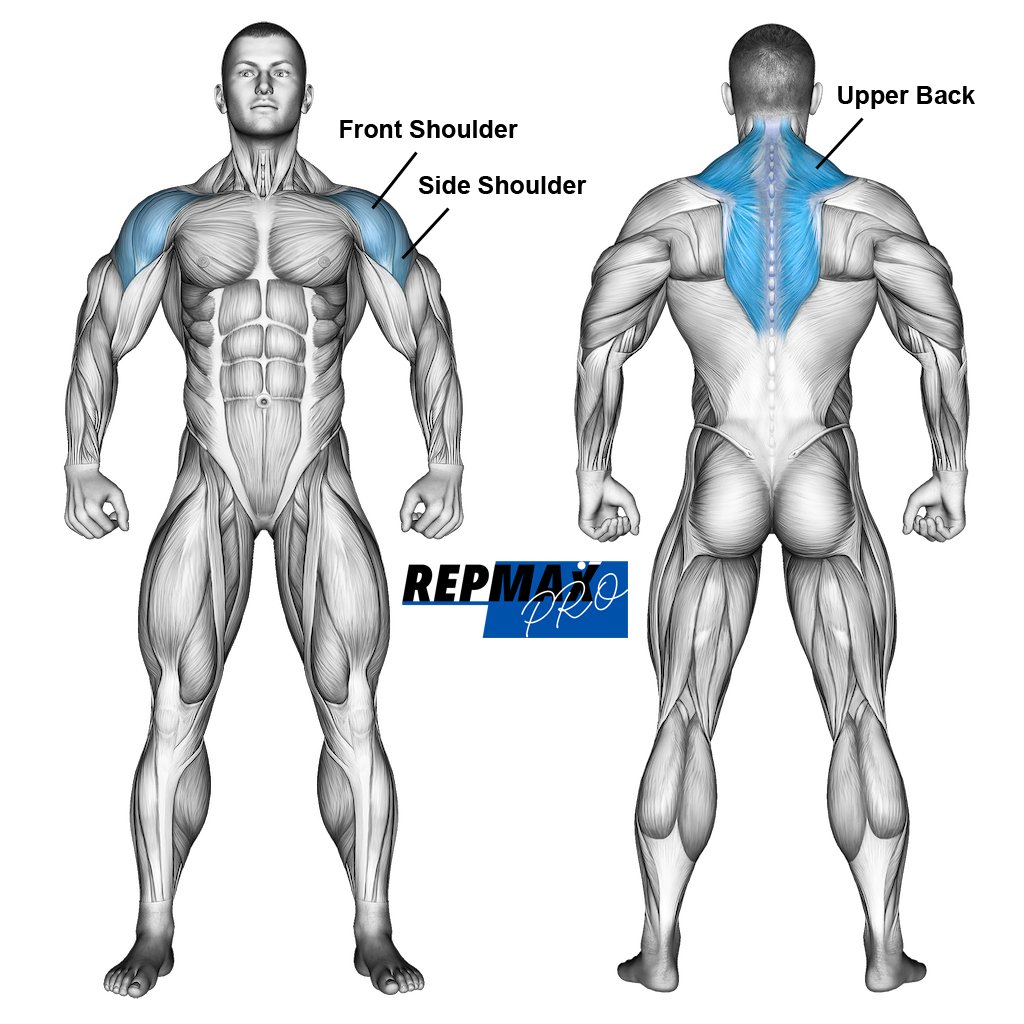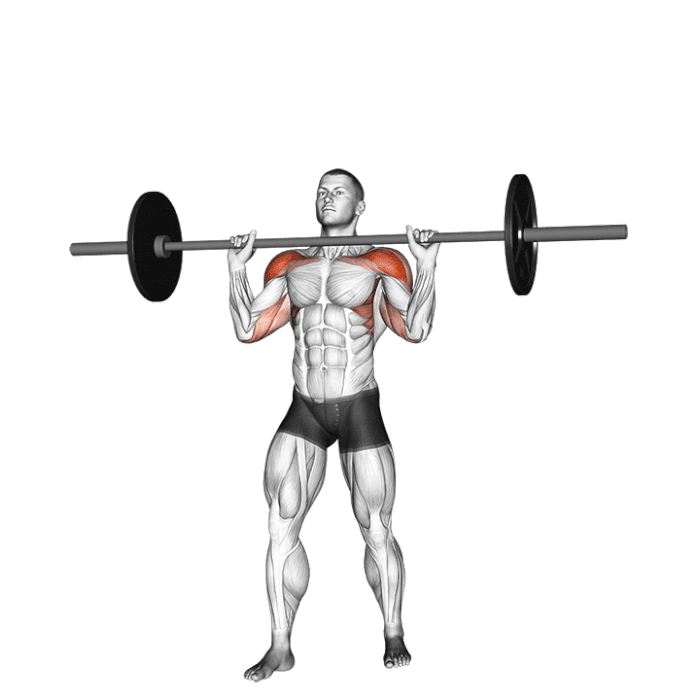Dumbbell Standing Kickback
The Dumbbell Standing Kickback is a highly effective exercise for targeting the triceps, the muscles located at the back of your upper arms. This movement isolates the triceps, making it a valuable addition to any strength training or bodybuilding routine. Its simplicity and effectiveness make it a staple for those looking to enhance arm definition and strength.
Unlike other triceps exercises, this movement is performed while standing, which requires additional core stabilization. The exercise can be done using a single dumbbell, which adds versatility to your workout.
Targeted Muscle Groups

Primary Muscles:
- Triceps Brachii: The primary muscle targeted during the Dumbbell Standing Kickback is the triceps brachii. This muscle, located at the back of the upper arm, is responsible for elbow extension. The kickback motion effectively isolates and engages this muscle.
Secondary Muscles:
- Deltoids (Shoulders): The rear deltoids assist in stabilizing the arm during the movement, providing support as you extend the dumbbell backward.
- Rhomboids and Trapezius (Upper Back): These muscles help stabilize the shoulder blades and upper back during the exercise, maintaining proper posture.
- Core Muscles: Your abdominal and lower back muscles engage to keep your torso stable and prevent excessive swaying during the exercise.
Equipment Needed
- Dumbbell: A single dumbbell is required for this exercise. The weight should be selected based on your strength level and ability to perform the exercise with proper form.
- Bench or Stability Ball (Optional): While the exercise can be done standing, using a bench or stability ball for support can enhance form and reduce strain on the lower back.
How to Do the Dumbbell Standing Kickback: Step-by-Step Guide
Step 1: Set Up Your Position
- Stand with your feet shoulder-width apart and hold a dumbbell in one hand. Slightly bend your knees and hinge forward at the hips while keeping your back straight. If using a bench or stability ball, place one knee and hand on the bench for added support.

Muscles used in the military press.
Illustration credit © Aliaksandr Makatserchyk
Step 2: Begin the Movement
- Starting Position: With your torso bent forward and your arm holding the dumbbell hanging straight down, engage your core to maintain stability. Your palm should face inward, and your elbow should be bent at about a 90-degree angle.
Step 3: Perform the Kickback
- Extension Phase: Extend your elbow to push the dumbbell backward, straightening your arm. Keep your upper arm stationary and close to your body throughout the movement. Focus on contracting the triceps as you extend the dumbbell.
- End Position: At the top of the movement, your arm should be fully extended but not locked out. Hold for a brief moment to maximize triceps contraction.
Step 4: Return to Starting Position
- Flexion Phase: Slowly bend your elbow to return the dumbbell to the starting position. Control the movement to maintain tension on the triceps and avoid using momentum.
Step 5: Repeat
- Perform the desired number of repetitions with one arm, then switch to the other arm. Ensure you maintain proper form throughout the exercise.
Recommended Reps and Sets
- Beginners: 2-3 sets of 10-12 reps per arm with light to moderate weight
- Intermediate: 3-4 sets of 12-15 reps per arm with moderate weight
- Advanced: 4-5 sets of 15-20 reps per arm with heavier weight for muscle hypertrophy
Pro Tips for Success
- Keep Your Elbow Stable: During the extension phase, keep your elbow fixed in place and close to your torso to ensure the triceps are the primary muscle working.
- Control the Movement: Perform the exercise with a slow and controlled motion. Avoid using momentum or swinging the dumbbell, as this reduces the effectiveness of the exercise.
- Engage Your Core: Maintain a tight core to prevent lower back strain and to keep your torso stable throughout the exercise.
- Proper Weight Selection: Choose a weight that allows you to complete the set with good form. If you can easily complete the set without challenge, consider increasing the weight gradually.
- Focus on Muscle Contraction: Concentrate on contracting the triceps at the top of the movement. This mind-muscle connection enhances muscle engagement and development.
Common Mistakes to Avoid
- Using Excessive Weight: Lifting too heavy can compromise your form and lead to injury. Start with a manageable weight to ensure you can perform the exercise correctly.
- Swinging the Dumbbell: Avoid using momentum to complete the movement. Swinging the dumbbell reduces the effectiveness of the exercise and can strain the shoulder joint.
- Neglecting Elbow Position: Keeping your elbow stable and close to your body is crucial. Allowing it to drift can shift the focus away from the triceps and reduce the exercise’s effectiveness.
- Overarching the Back: Ensure your back stays flat and avoid overarching, which can strain the lower back. Engage your core to support your spine throughout the exercise.
The Dumbbell Standing Kickback is a highly effective exercise for isolating and strengthening the triceps. By incorporating this exercise into your routine, you can develop well-defined and stronger arms. Focus on maintaining proper form, using controlled movements, and selecting the appropriate weight to maximize the benefits and minimize the risk of injury. Regularly practicing this exercise will contribute to a more balanced and aesthetically pleasing upper body.
